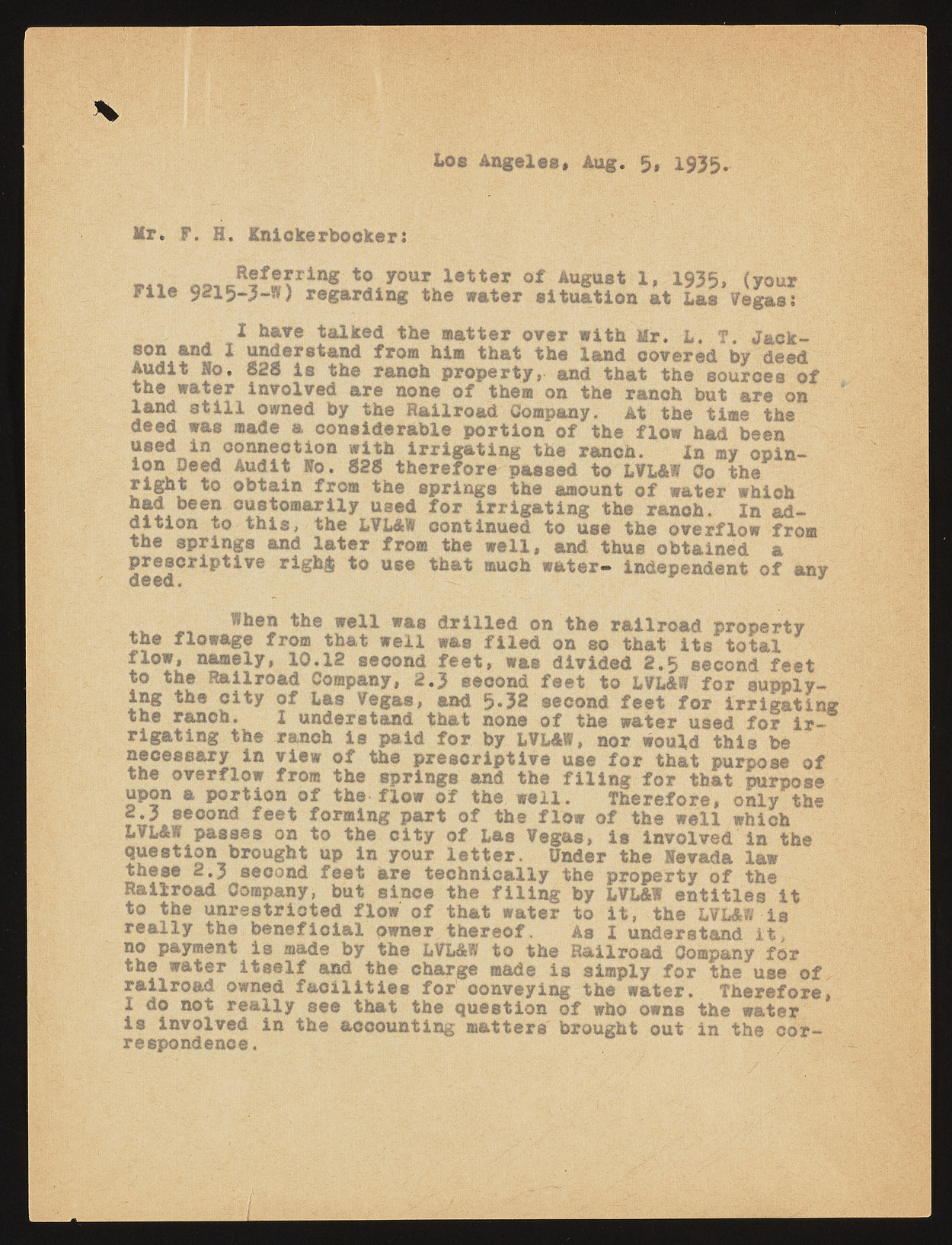Copyright & Fair-use Agreement
UNLV Special Collections provides copies of materials to facilitate private study, scholarship, or research. Material not in the public domain may be used according to fair use of copyrighted materials as defined by copyright law. Please cite us.
Please note that UNLV may not own the copyright to these materials and cannot provide permission to publish or distribute materials when UNLV is not the copyright holder. The user is solely responsible for determining the copyright status of materials and obtaining permission to use material from the copyright holder and for determining whether any permissions relating to any other rights are necessary for the intended use, and for obtaining all required permissions beyond that allowed by fair use.
Read more about our reproduction and use policy.
I agree.Information
Digital ID
Permalink
Details
Member of
More Info
Rights
Digital Provenance
Publisher
Transcription
H Los Angeles, Aug. 5, 1935, Mr. F. H. Knickerbocker: Referring to your le tte r of August 1 , 1935. (your F ile 9215-3-W) regarding the water situation at Lae Vegas: Z bare talked the matter over with Mr. L. ?. Jack-son and I understand from bim that the land covered by deed Audit No. 828 is the ranch property, and that the sources of the water involved are none of them on the ranch but are on * land s t i l l owned by the Railroad Company. At the time the deed was made a considerable portion of the flow had been used in connection with irrig a tin g the ranch. In my opinion Deed Audit No. 828 therefore passed to LVL&W Go the righ t to obtain from the springs the amount of water which had been customarily used fo r irrig a tin g the ranch. In addition to th is, the LVL&W continued to use the overflow from the springs and la te r from the w ell, and thus obtained a prescriptive righg to use that much water* independent of any deed. ®ben the well was d rille d on the railroad property the flowage from that well was file d on so that its total flow, namely, 10 .12 second fee t, was divided 2.5 second feet to the Railroad Company, 2.3 second feet to LVL&W for supplying the city of Las Vegas, and 5-32 second feet fo r Irrig a tin g the ranch. i understand that none of the water used fo r i r rigatin g the ranch is paid fo r by LVL&W» nor would this be necessary in view of the prescriptive use fo r that purpose of the overflow from the springs and the f i lin g fo r that purpose upon a portion o f the flow of the w ell. Therefore, only the 2.3 second feet forming part of the flow of the well which LFLAW passes on to the city of Las Vegas, is involved in the question brought up in your le tte r. Under the Nevada law these 2.3 second feet are technically the property o f the Railroad Company, but since the f i li n g by LVLA1 en titles It to the unrestricted flow o f that water to it , the LVL&J8 is re a lly the beneficial owner thereof. As I understand it , no payment is made by the LVL&S to the Railroad Company for the water i t s e lf and the charge made is simply fo r the use of El railroad owned f a c ilit i e s fo r conveying the water. Therefore, I do not re a lly see that the question of who owns the water is involved in the accounting matters brought out in the correspondence.

